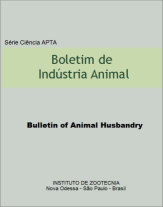Effect of aversive treatment on lactating piglets€™ behavior
Keywords:
animal welfare, production, social contactAbstract
The work aims to analize the behavior response and the ability to cope stressors when the piglets are exposed to aggressive treatment during the lactation phase. The behavior of 40 piglets was observed from birth to weaning (28 days). In the first fifteen days the observations were done every three days, with an interval of another three days. After this period, the observations were done once a week. Over a period of three hours, every five minutes it was registered the animal behavior. The group was divided into two treatments: rational group, where 18 piglets had minimal interaction with people and it was permitted the routine practice without sudden movements and loud sounds; and the aversive treatment, where 22 piglets received the daily routine of the farm, however, on every half hour during observations the observer performed a direct threat to the sow going into the cage with a flag and abruptly approach the animal, shouting or clapping. To avoid visual contact with the observer, he was located behind the maternity cage. Analysis of variance with fixed effects of time and time and means were compared by Tukey test or T at 5% of significance. In aversive treatment piglets spent most time at rest or exploring (P>0.05). However, in rational treatment the piglets remained resting most of the time (P<0.05). The interactions between pigs in the first phase of life are a determining factor of their behavior. In aversive treatment the frequency of negative suckling increased 76.07% compared to rational treatment (P<0.05). In this study the sows when in a stress situation expressed an increase in the frequency and time of vocalizations, so it leds to alterations on piglets such as the decline in suckling period. The physiological stress responses are responsible for the decrease in productivity of pigs in confinement and changes in behavior. Although the decrease in positive suckling has been observed in piglets submitted to aversive treatment, agonistic interactions were similar to the two treatments.Downloads
Downloads
Published
Issue
Section
License
Os autores não serão remunerados pela publicação de trabalhos, pois devem abrir mão de seus direitos autorais em favor deste periódico. Por outro lado, os autores ficam autorizados a publicar seus artigos, simultaneamente, em repositórios da instituição de sua origem, desde que citada a fonte da publicação original seja Boletim de Indústria Animal. A revista se reserva o direito de efetuar, nos originais, alterações de ordem normativa, ortográfica e gramatical, com vistas a manter o padrão culto da língua e a credibilidade do veículo. Respeitará, no entanto, o estilo de escrever dos autores. Alterações, correções ou sugestões de ordem conceitual serão encaminhadas aos autores, quando necessário. Nesses casos, os artigos, depois de adequados, deverão ser submetidos a nova apreciação. As opiniões emitidas pelos autores dos artigos são de sua exclusiva responsabilidade. Todo o conteúdo deste periódico, exceto onde está identificado, está licenciado sob a Licença Creative Commons Attribution (CC-BY-NC). A condição BY implica que os licenciados podem copiar, distribuir, exibir e executar a obra e fazer trabalhos derivados com base em que só se dão o autor ou licenciante os créditos na forma especificada por estes. A cláusula NC significa que os licenciados podem copiar, distribuir, exibir e executar a obra e fazer trabalhos derivados com base apenas para fins não comerciais.













